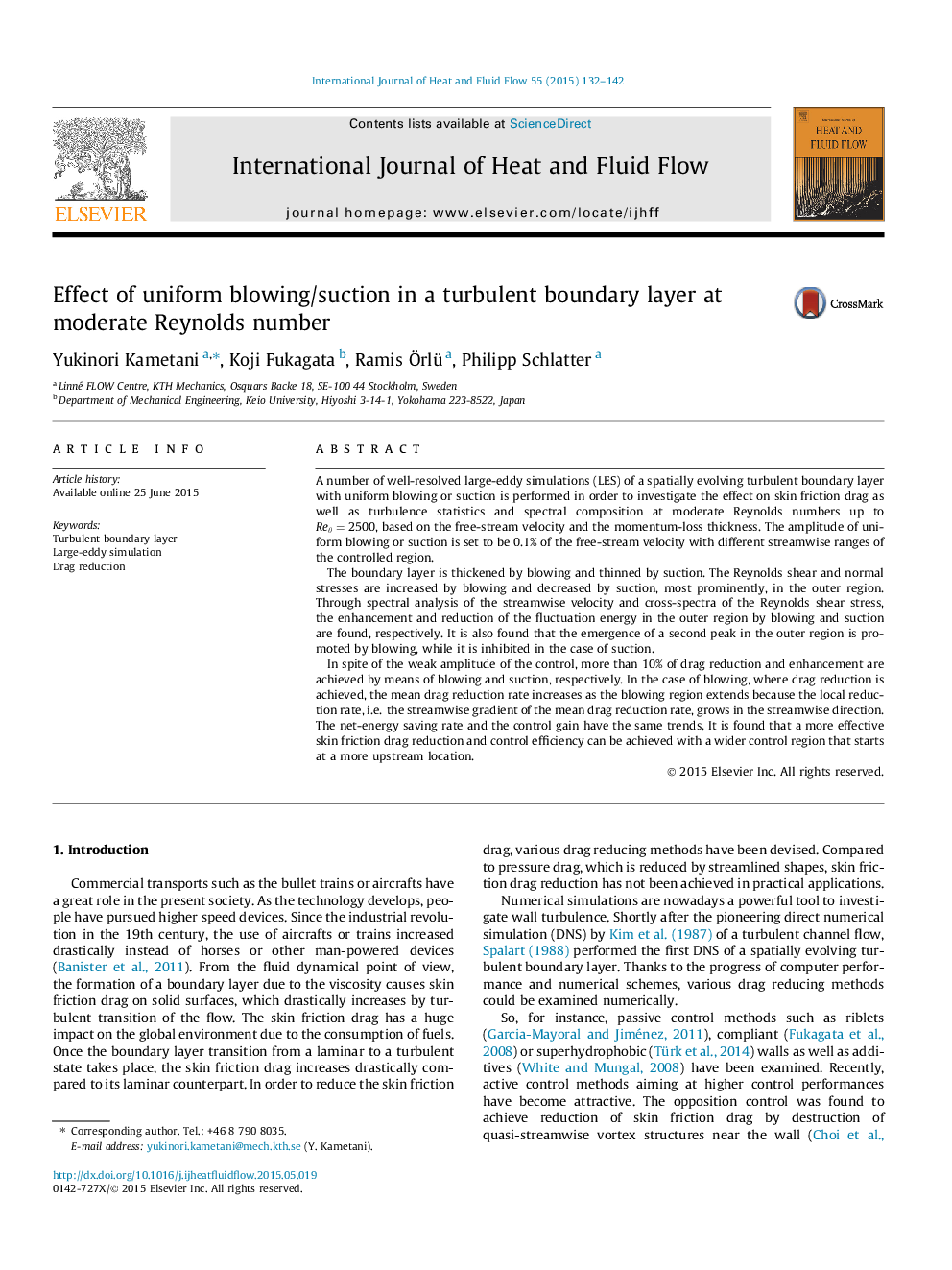| کد مقاله | کد نشریه | سال انتشار | مقاله انگلیسی | نسخه تمام متن |
|---|---|---|---|---|
| 655076 | 1457626 | 2015 | 11 صفحه PDF | دانلود رایگان |
• LESs of turbulent boundary layer with uniform blowing and suction was performed.
• Reynolds stresses are increased by blowing and decreased by suction.
• Enhancement/reduction of fluctuation energy in outer region found for blowing/suction.
• Blowing at 0.1% of freestream velocity achieves over 10% of drag reduction rate.
• Larger control efficiency by blowing can be achieved with wider control region.
A number of well-resolved large-eddy simulations (LES) of a spatially evolving turbulent boundary layer with uniform blowing or suction is performed in order to investigate the effect on skin friction drag as well as turbulence statistics and spectral composition at moderate Reynolds numbers up to Reθ=2500Reθ=2500, based on the free-stream velocity and the momentum-loss thickness. The amplitude of uniform blowing or suction is set to be 0.1% of the free-stream velocity with different streamwise ranges of the controlled region.The boundary layer is thickened by blowing and thinned by suction. The Reynolds shear and normal stresses are increased by blowing and decreased by suction, most prominently, in the outer region. Through spectral analysis of the streamwise velocity and cross-spectra of the Reynolds shear stress, the enhancement and reduction of the fluctuation energy in the outer region by blowing and suction are found, respectively. It is also found that the emergence of a second peak in the outer region is promoted by blowing, while it is inhibited in the case of suction.In spite of the weak amplitude of the control, more than 10% of drag reduction and enhancement are achieved by means of blowing and suction, respectively. In the case of blowing, where drag reduction is achieved, the mean drag reduction rate increases as the blowing region extends because the local reduction rate, i.e. the streamwise gradient of the mean drag reduction rate, grows in the streamwise direction. The net-energy saving rate and the control gain have the same trends. It is found that a more effective skin friction drag reduction and control efficiency can be achieved with a wider control region that starts at a more upstream location.
Journal: International Journal of Heat and Fluid Flow - Volume 55, October 2015, Pages 132–142
